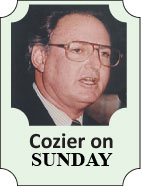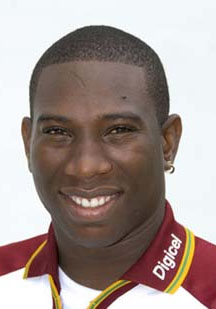When the West Indies Cricket Board (WICB) introduced England ‘A’ into its annual first-class tournament in 2001, some of the reaction bordered on paranoia.
Scyld Berry, subsequently editor of Wisden, wrote in the London Sunday Telegraph that it was “a new departure with overtones of a return to colonial days.”

“National pride” was at stake, he contended. “The regional four-day competition is for West Indian teams and should remain so.”
The Jamaica Observer charged that the board was “willing to subsume West Indian sovereignty and trade our nationalism.”
The WICB explained simply that its purpose was to “increase the competitiveness, quality and quantity of matches” in the tournament. It was an “innovative approach to domestic cricket development, consistent with the global approach employed by other industries worldwide.”
The fear seemed to be that a combined England squad, at the time including six current Test players and chosen from its 18 first-class counties, would be too strong for their individual regional opponents and would sweep all before them, especially as the leading West Indies players were away on an Australia tour.

The furor duly faded when the Englishmen (among them Graeme Swann, Ryan Sidebottom and Ian Bell in their pre-Test days) could do no better than finish third behind Barbados and Guyana.
Other overseas ‘A’ teams – India, Bangladesh and Kenya – followed over the next three seasons, with no objections, before the exercise was scrapped, partly because they did not provide the desired challenge (India finished fourth, Bangladesh and Kenya bottom), partly for financial reasons.
Ten years on, the England second stringers, now parading as the England Lions, are back for the 2011 tournament that starts on Friday. Unlike their initial entry, there has been no resistance to their presence.
Nor was there any when the English counties, Hampshire and Somerset, were brought into the recent Caribbean T20 – except from West Indies Players Association (WIPA) director Michael Hall who charged that the cost to get them here represented a “spending spree.”
For all the justifiable concern over the standard of regional cricket, territorial teams have repeatedly proven that they measure up to those outsiders who have come to the Caribbean to challenge them. Trinidad & Tobago went even further with their unbeaten advance to the final of the inaugural Champions League.
Even so, it is perfectly feasible that the England Lions could win every match over the next six weeks. They certainly have the requisite all-round strength and experience.

After initially contending in 2001 that whoever won the Busta Cup (as it was then) was “of limited importance compared to the priority of creating a stronger West Indies team”, the WICB quickly realised the embarrassing impracticality of having a foreign champion.
Its solution, then and now, was to restrict the England entry to the round-robin first round, reserving the semi-finals and deciding grand final to the four top West Indian teams.
That is simply a cosmetic arrangement. The principle remains the same, to pit all regional players against tough international opposition in a significant competition.
Such opportunities used to come around annually against the touring Test teams but no more.
In 1974, for instance, all six territories, plus a President’s XI, had four-day matches England interspersed between the five Tests. In contrast, the 2011 international tourists, Pakistan and India, have not a single first-class fixture scheduled outside the Tests, ODIs and international T20s.
So the next two months provide both West Indies and England with a chance to assess seasoned players seeking to establish and, in some cases, reestablish their credentials and another younger, emerging group earmarked for future reference. The results will also indicate their overall reserve depth.
Territorial teams (Trinidad & Tobago and Jamaica especially) are weakened, at least until the final, by the absence of the 15 leading players at the World Cup. Yet a glance at comparative figures indicates that, even at their strongest, they would be hard-pressed by the Lions.
Between them, the Englishmen have 71 first-class hundreds. Six of their batsmen average over 40, five over 35. Seven bowlers have over 100 wickets.
Barbados, by comparison, have a combined sum of 21 hundreds. Only four of their batsmen average better than 35 and only two bowlers have more than 100 wickets (Pedro Collins 478, Ryan Hinds 211).
While selectors will surely take performances in every match into account, they are likely to be swayed most by returns against the foreigners.
For a host of historical reasons, there was once nothing more guaranteed to get a West Indian cricketer’s competitive juices pumping more than a contest against England.
Those times have passed. The motivation for those who face the Lions in the coming season is purely cricketing.
For the local team that can beat them, it would be a terrific psychological boost. For the batsman who amasses a big hundred or the bowler who collects a bagful of wickets, it could be a step towards the West Indies team or, at least, a lucrative professional county contract.





